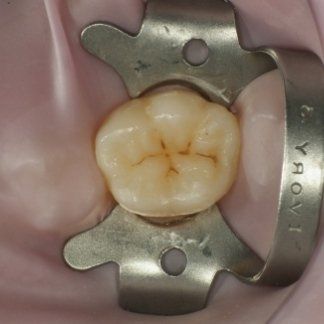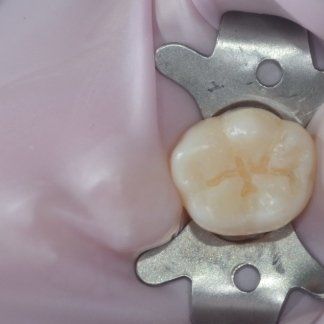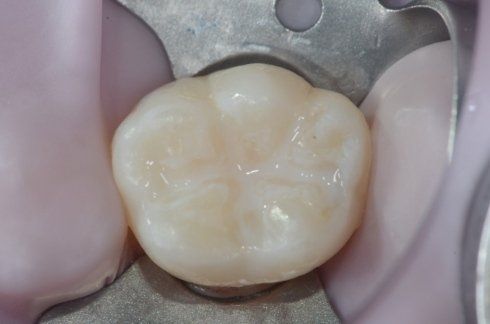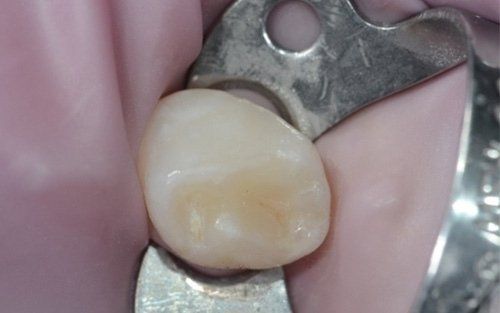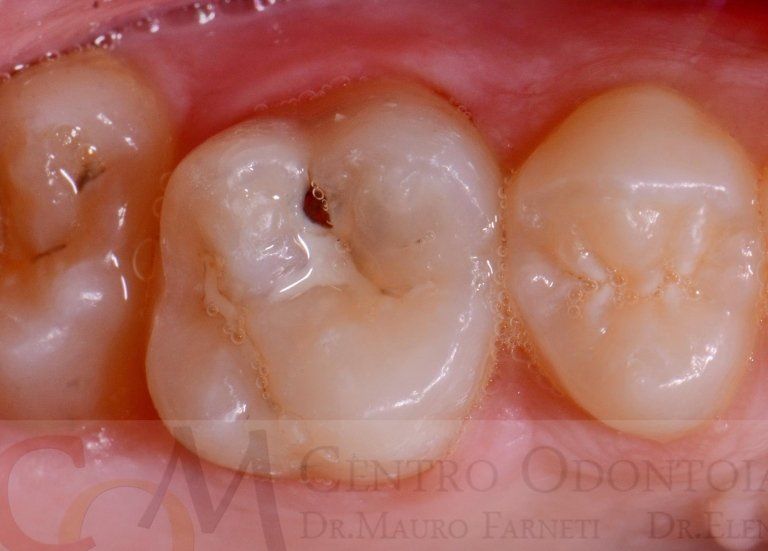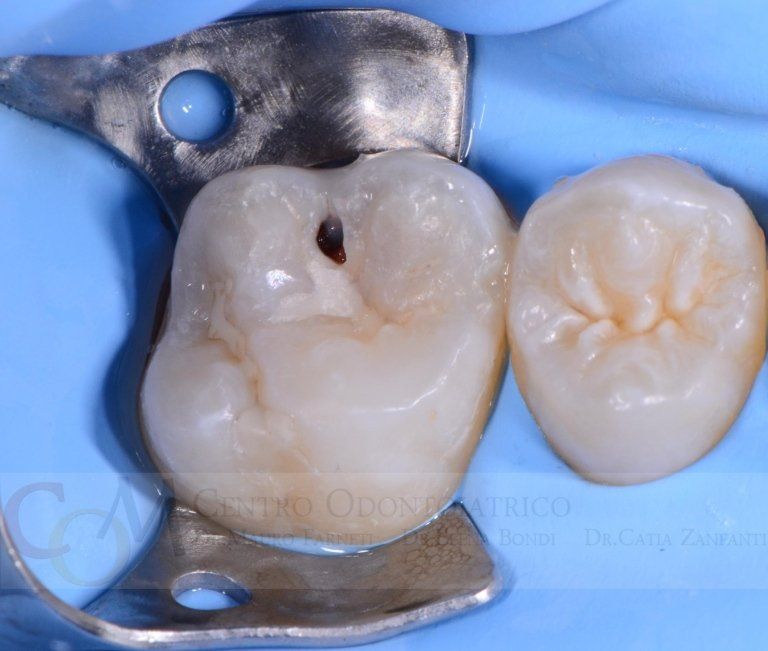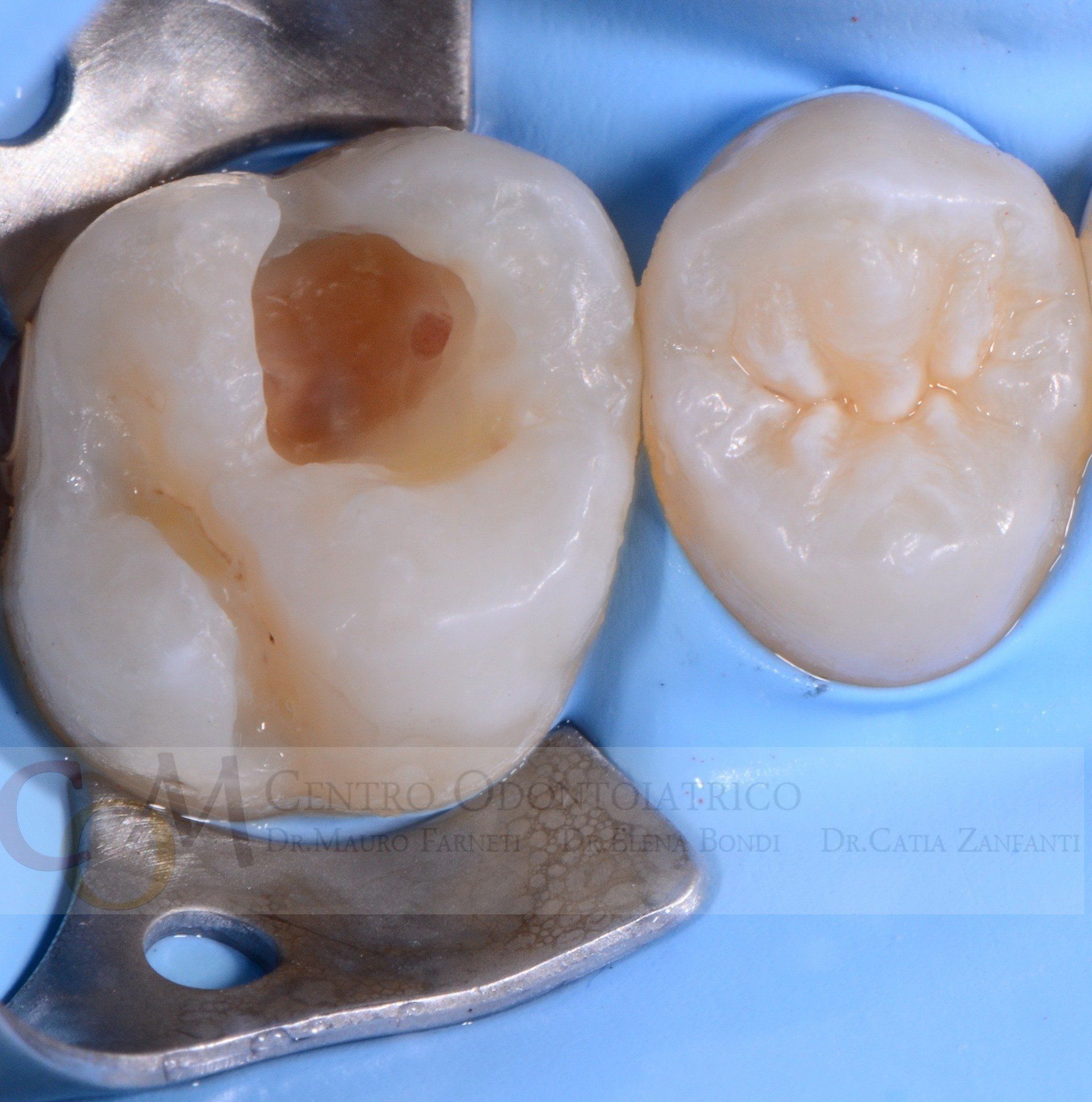sealants
Sealing teeth is the practice of placing a "varnish", usually white in colour, on the grooves of permanent molars to
protect them from decay. If applied correctly, this procedure is extremely effective and long-lasting.
Sealants are applied to permanent teeth (usually the first and second molars) around the age of 7-8 for the first molars, and 12-13 for the second molars.
However, this practice is often carried out inconsiderately. Not all teeth need to be sealed: the morphology (i.e., shape) of the teeth, the caries susceptibility of the child, and oral hygiene at home need to be evaluated. If, based on these considerations, sealing is deemed necessary, it should be conducted according to a precise clinical protocol, which includes the application of a rubber dam (see topic in "Services"), cleaning of any pigmented grooves, and bonding of the sealant. "Forgetting" one of these steps results in poor-quality therapy: for example, sealing grooves without prior cleaning risks sealing decay underneath. Upon inspection by the dentist, these grooves would appear sealed... but so would the underlying decay, which wasn't removed, making it invisible. This would result in dental decay that cannot be diagnosed in its early stages as it is "covered" by the dental sealant... truly not a good job! Below are examples of correctly sealed and emblematic cases of how sealing should NOT be performed.



